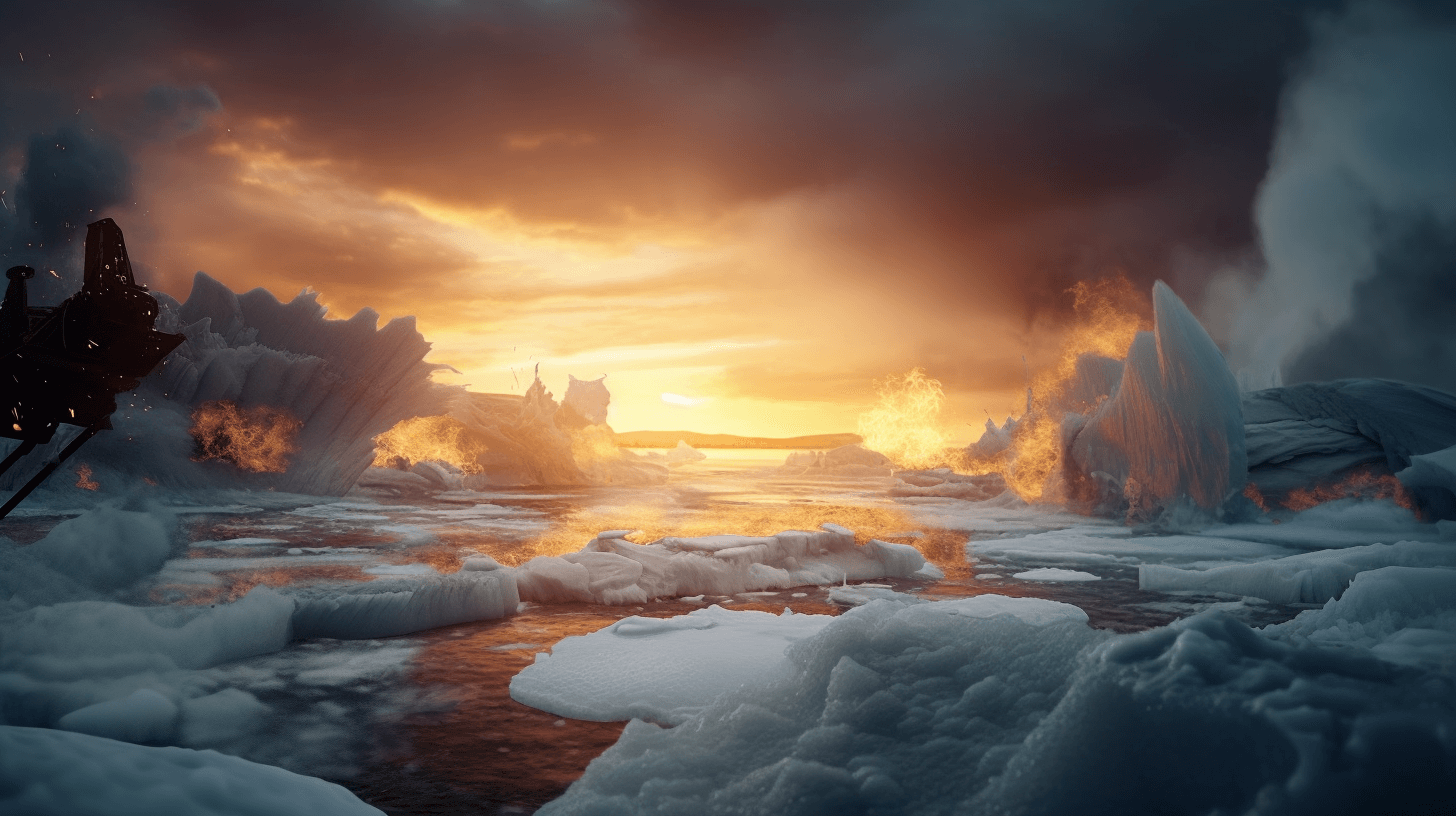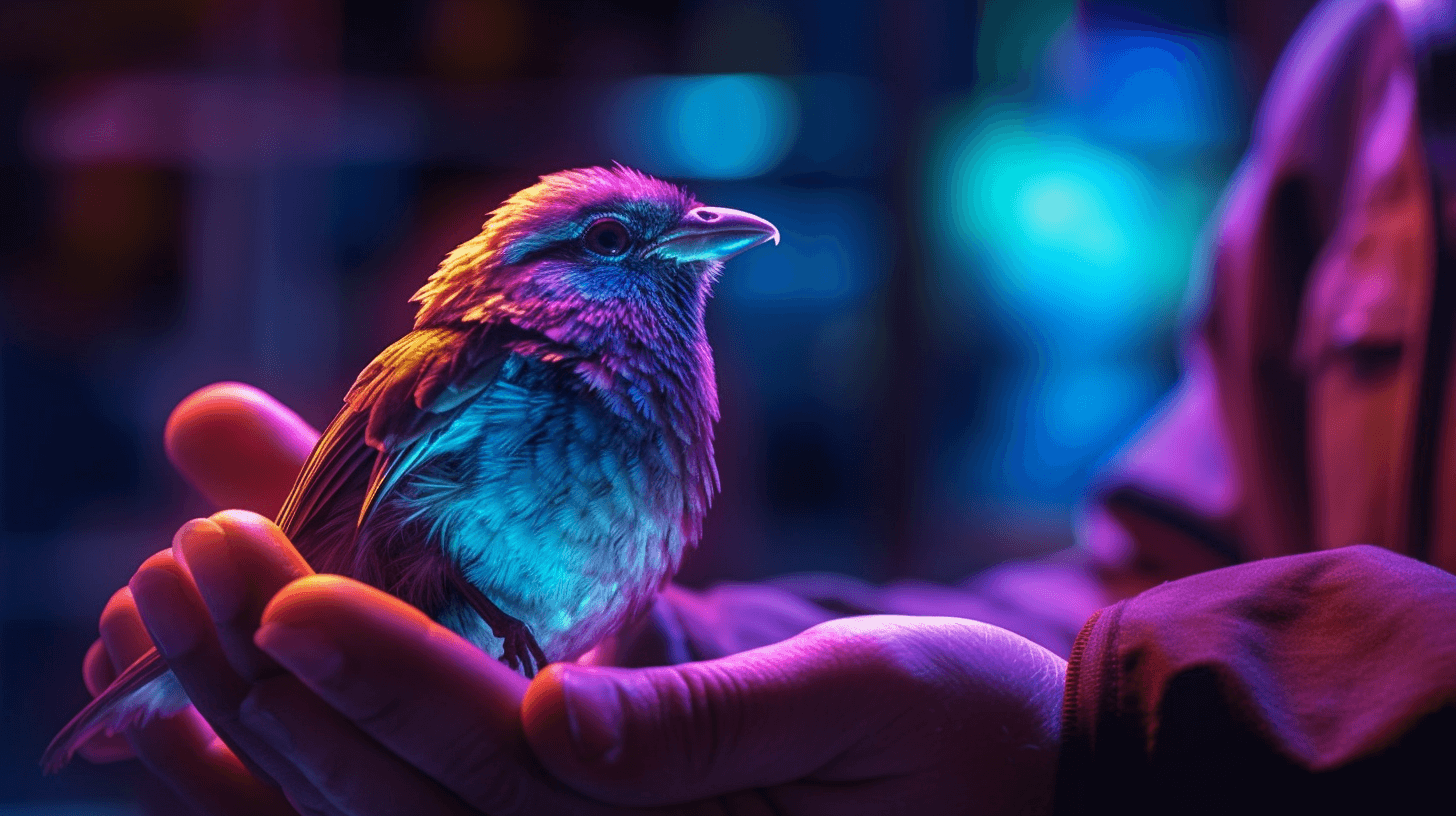🌤️👵🏽🦵🏽 Befo’ Smartphones An’ Da National Weatha Service, Had Grandma’s Knee
From long time ago, humans stay relyin’ on weatha forecasts fo’ survive. We can make solid predictions by checkin’ out da sky, experts say, but watchin’ animal behavior can throw us off track.
Da one time wen I wen tink my grandma get da kine psychic powers. One hot day in da mid ’90s, in Richmond, Va., where I wen grow up, da temperature wen shoot up above 100 degrees, like how it stay doin’ during da summer. Seem like everyting melting unda da hot kine heat dat day. My grandma wen start fo’ rub her knees hard, jus’ like how fortune teller stay rub da crystal ball. She wen look at me an’ say, “Da rain goin’ come.” 🌞🔥💦
She wen hit da nail on da head.
Later on, I wen find out dat my grandma no get da kine psychic powers. She wen use da pain in her knees fo’ predict da rain, one kine thing dat get plenty studies but no clear results. Befo’ humans wen start dependin’ on technology, we used our senses — like watching animal behavior and da shapes of da clouds — fo’ predict da weatha. 🌩️🔮
Ova time, all these observations wen get stitched togedda, make one history, said Mark Wysocki, da state climatologist fo’ New York and one professor of meteorology at Cornell University. “People started fo’ either pass these on by talkin’ story or, as civilization started fo’ evolve more, people would start writin’ these things down,” he said. 📝🌦️
Sandi Duncan, da managing editor of Farmers’ Almanac, where weatha lore still regularly talked about, said passin’ down weatha lore ova time like one game of telephone, addin’ dat some of it may have been changed fo’ make rhyme. Human survival, especially dat of sailors and fishermen, has historically depended big time on da weatha. One of da most recognizable sayings, “Mackerel clouds in da sky, expect more wet than dry,” can be traced back at least a couple hundred of years to mariners. 🎣⛵
“At sea, had no communication back then, no had cellphone,” Mr. Wysocki said. “So da sailors had fo’ rely on da sky conditions, da wind direction, da waves.” Ship captains would write down their observations in logs, which would be shared. 📚🌊
Da science behind da phrase holds up. Clouds that look like da scales on one mackerel called altocumulus clouds and form in advance of one big kine storm, Mr. Wysocki said. “If you would see something like this coming, then that’s kind of a warning sign that we have an unstable atmosphere,” he said. 🌧️☁️
Weatha lore related to sky color and cloud shapes can be explained by science, Mr. Wysocki said. “Red sky at night, sailor’s delight; red sky in da morning, sailor’s warning,” is generally true. When you see red sky at sunset, da sun’s light is traveling through plenty dust particles, typically one sign of high pressure and stable air coming from da west, according to the Library of Congress. When a sunrise is red in color, it means that good weather has already passed, signaling one potential storm could be coming.
Sayings based on birds, insects and oddah kine animals often less scientific and can make us confuse. In da Midwest and Northeast, da woolly bear caterpillar sometimes used fo’ predict how bad da upcoming winter going be. According to weatha lore, da longer da caterpillar’s black bands, da more rough da winter goin’ be; da opposite is predicted if da middle, brown band stay more wide. Da National Weather Service wen debunk dis myth. Da colors on a woolly bear caterpillar get direct relation to how long it has been feeding, its age, and species. Similarly, efforts fo’ use groundhogs in early February to predict six more weeks of winter or one early spring have been debunked. ❄️🐛🦔
“Squirrels gathering nuts in one flurry will cause snow to gather in a hurry” is one oddah popular weatha saying, but Mr. Wysocki said it stay false: Conditions may simply have been optimal fo’ oak trees to produce more acorns, making like da squirrels gathering more. “People see it one time, and they no go back fo’ check 20, 40 times,” he said about da seemingly related happenings. “You need get plenty experiments, multiple observations fo’ make dis kine thing work out.” 🌰🐿️
Farmers also wen rely upon these sayings, some of which were printed in almanacs. “When we started da Farmers’ Almanac in 1818, we offered weatha forecasts but they were much more general than they are now,” Ms. Duncan said. 🌾📚
Da change from winter to spring regularly brings severe weatha to large parts of da United States. In early March, one string of powerful storms wen kill at least 12 across Alabama, Arkansas, Kentucky, Mississippi, and Tennessee.
“I tink we’re in fo’ a fairly active severe weatha season,” said John Sirlin, a storm chaser fo’ more than 30 years. Mr. Sirlin, 47, stay living in Arizona and prefers chasing storms in da Northern High Plains. He know plenty about weatha lore and regularly uses basic observations, along with technology, fo’ predict weatha behavior. 🌪️💻
“There’s so many different things you can learn about da weatha just by using your senses,” he said, including paying attention to wind direction and noticing da changing shapes of clouds, which can reveal da stability of da atmosphere.
But dat information gotta be read correctly fo’ assess potential dangers like hail and tornadoes, or, in da case of my grandma and her aching joints, thunderstorms. 🌩️⛈️
“What stay really cool about da atmosphere is dat it gives you clues and signals about all of these different things if you learn to pick up on them and interpret them correctly,” he said.
Dis spring, he and storm chasers spread out across da United States in anticipation of severe weatha. Mr. Sirlin get one lifelong passion and obsession with weatha and notes that he’s always learning. “Thirty-something years in, every time I go out, I’m always learning something new and picking up on something different.” 🌈🌪️🌨️
NOW IN ENGLISH
🌤️👵🏽🦵🏽 Before Smartphones And The National Weather Service, There Was Grandma’s Knee
Since time immemorial, humans have relied on weather forecasts for survival. We can make reliable predictions by observing the sky, experts say, but watching animal behavior can lead us astray.
There was a time when I thought my grandmother had psychic abilities. On a scorching day in the mid-’90s, in Richmond, Va., where I was raised, the temperature soared above 100 degrees, as it often does during the summer. Everything seemed to be melting under the intense heat that day. My grandmother began to rub her knees intensely, much like a fortune teller caressing a crystal ball. She looked at me and said, “It’s going to rain.” 🌞🔥💦
And she was right.
Later, I discovered that my grandmother didn’t have psychic abilities. She used the pain in her knees to predict the rain, a practice that has been widely studied but yields unclear results. Before humans began to depend on technology, we used our senses — such as observing animal behavior and the shapes of the clouds — to predict the weather. 🌩️🔮
Over time, all these observations were compiled, creating a history, said Mark Wysocki, the state climatologist for New York and a professor of meteorology at Cornell University. “People began to pass these on through storytelling or, as civilization advanced, people started to write these things down,” he said. 📝🌦️
Sandi Duncan, the managing editor of the Farmers’ Almanac, where weather lore is still regularly discussed, said passing down weather lore over time is like a game of telephone, adding that some of it may have been altered to rhyme. Human survival, especially that of sailors and fishermen, has historically depended heavily on the weather. One of the most recognizable sayings, “Mackerel clouds in the sky, expect more wet than dry,” can be traced back at least a couple of hundred years to mariners. 🎣⛵
“At sea, there was no communication back then, no cell phones,” Mr. Wysocki said. “So the sailors had to rely on the sky conditions, the wind direction, the waves.” Ship captains would document their observations in logs, which would be shared. 📚🌊
The science behind the phrase is sound. Clouds that resemble the scales of a mackerel are known as altocumulus clouds and form ahead of a major storm, Mr. Wysocki said. “If you would see something like this coming, then that’s kind of a warning sign that we have an unstable atmosphere,” he said. 🌧️☁️
Weather lore related to sky color and cloud shapes can be explained by science, Mr. Wysocki said. “Red sky at night, sailor’s delight; red sky in the morning, sailor’s warning,” is generally true. When you see a red sky at sunset, the sun’s light is traveling through a lot of dust particles, typically a sign of high pressure and stable air coming from the west, according to the Library of Congress. When a sunrise is red in color, it means that good weather has already passed, signaling a potential storm could be approaching.
Sayings based on birds, insects, and other animals are often less scientific and can be misleading. In the Midwest and Northeast, the woolly bear caterpillar is sometimes used to predict how severe the upcoming winter will be. According to weather lore, the longer the caterpillar’s black bands, the harsher the winter will be; the opposite is predicted if the middle, brown band is wider. The National Weather Service has debunked this myth. The colors on a woolly bear caterpillar are directly related to how long it has been feeding, its age, and species. Similarly, attempts to use groundhogs in early February to predict six more weeks of winter or an early spring have been debunked. ❄️🐛🦔
“Squirrels gathering nuts in a flurry will cause snow to gather in a hurry” is another popular weather saying, but Mr. Wysocki said it’s false: Conditions may simply have been optimal for oak trees to produce more acorns, resulting in the squirrels gathering more. “People see it once, and they don’t go back to check 20, 40 times,” he said about seemingly related events. “You need many experiments, multiple observations to make this kind of thing work out.” 🌰🐿️
Farmers also relied upon these sayings, some of which were printed in almanacs. “When we started the Farmers’ Almanac in 1818, we offered weather forecasts but they were much more general than they are now,” Ms. Duncan said. 🌾📚
The transition from winter to spring often brings severe weather to large parts of the United States. In early March, a string of powerful storms killed at least 12 people across Alabama, Arkansas, Kentucky, Mississippi, and Tennessee.
“I think we’re in for a fairly active severe weather season,” said John Sirlin, a storm chaser for more than 30 years. Mr. Sirlin, 47, lives in Arizona and prefers chasing storms in the Northern High Plains. He knows a lot about weather lore and regularly uses basic observations, along with technology, to predict weather behavior. 🌪️💻
“There are so many different things you can learn about the weather just by using your senses,” he said, including paying attention to wind direction and noticing the changing shapes of clouds, which can reveal the stability of the atmosphere.
But that information must be interpreted correctly to assess potential dangers like hail and tornadoes, or, in the case of my grandmother and her aching joints, thunderstorms. 🌩️⛈️
“What’s really cool about the atmosphere is that it gives you clues and signals about all of these different things if you learn to pick up on them and interpret them correctly,” he said.
This spring, he and other storm chasers spread out across the United States in anticipation of severe weather. Mr. Sirlin has a lifelong passion and obsession with weather and notes that he’s always learning. “Thirty-something years in, every time I go out, I’m always learning something new and picking up on something different.” 🌈🌪️🌨️







